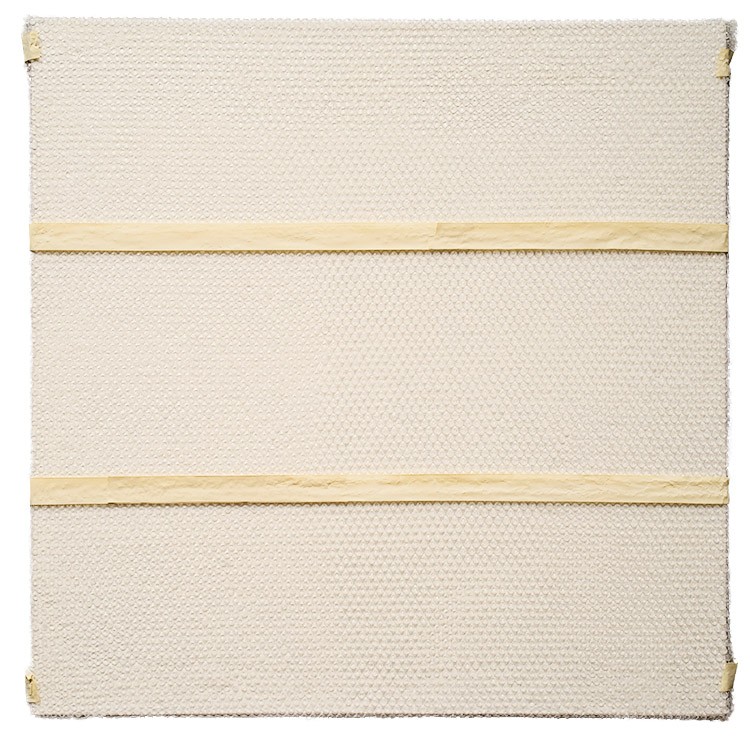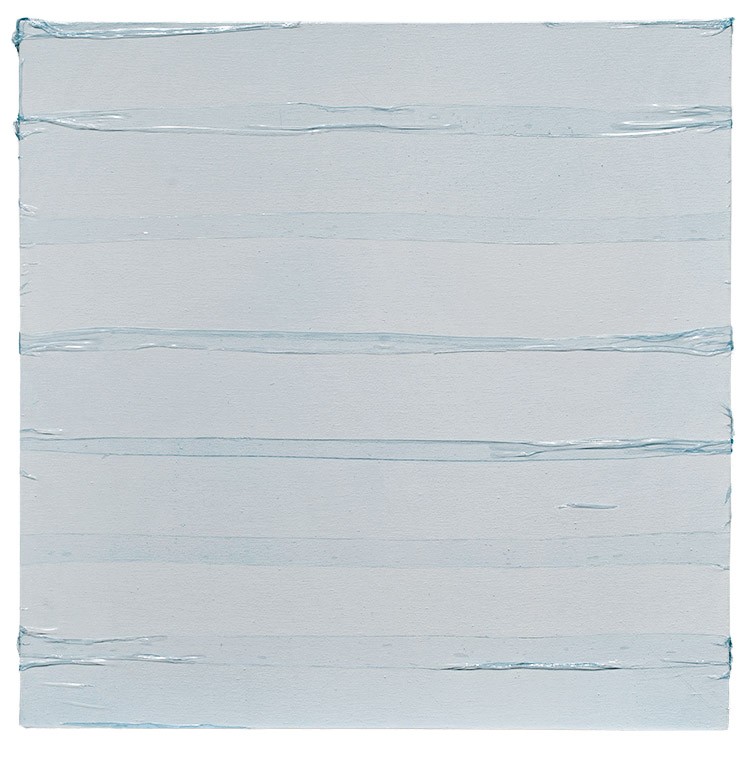Tammi Campbell
Dear Tammi,
I want to start this letter, this meditation on your work, by expressing my gratitude for what you have put out into the world. Your exhibition “Dear Agnes” is a beautiful rendition of the epistolary form that I have come to love in literature, and that you translate so elegantly into the visual. Each of your 85 letters to Agnes Martin, a meditation, a mediation of intimate moments, allows the viewer to communicate with her on an ethereal plane, a plane one would not normally have access to. I find there is something akin to solace found in creating letters for someone, even when that person may never read them. There is a feeling of both relief and emotional vulnerability that is formed in this tender act.
Your grids could be letters drawn out into lines, each line a line that could have been words, and we are left to imagine what you might have said, what you might say to Agnes if you were ever to present these letters to her, if you could. What would you have written if you had written these letters as words? Your work transcends the literal act of writing a letter, or expressing oneself through words, a form that is understood across language groups. Instead you use the image as your language. This leaves room for pause, for time to be taken to consider each delicate line, including those made by your hands as you fold the paper thrice.
It’s true, your work explores the aesthetics of minimalism and modernism, two large and expansive movements in modern art history. However, beyond that your work draws vastly from a contemporary approach to these understandings of art. You move past the legacies that minimalism has left, in particular by those who could be called the “fathers of minimalism,” and insert yourself as a woman artist into this field. Further, by doing so in your letters, you disintegrate the barriers between language and the visual arts, bringing the two together closely, allowing them to breathe and move together in one moment.

Tammi Campbell, Buff Monochrome with Bubble Wrap and Masking Tape, 2018, acrylic on linen.
Your letters are reflective of the work of the venerable Canadian painter Agnes Martin. Both of you explore the vast expanse of the grid, and all the opportunities that this simple gesture offers. The grid seen from above reminds me of the landscape in Saskatchewan, the province you now call home, envisioning the farmer’s fields across that prairie spread wide and long, into plots. Each of your grids could represent one tiny section of your province as seen from above, or laterally driving across the vast expanse of land, flattened and drawn thin, the sky stretching endlessly above.
I’m equally compelled by the monochrome series of works in “Dear Agnes.” These works also attend to a minimalistic appreciation as well as the aesthetic qualities of painting and drawing, bringing the two together in symbiotic union. The paintings in this series, which exhibit the appearance of ordinary packing materials such as bubble wrap, corrugated cardboard and packing tape, are in fact acrylic paintings. Entirely different from your letters to Martin, their subtlety creates a compelling connection between your letters and paintings. I can see how carefully executed they are. The series enters into a silent conversation with Martin’s work through their meticulous absorption with materiality and the picture plane. The packing tape appears like two brush strokes across the canvas, while the bubble wrap takes its form from carefully built-up layers of acrylic paint.
Perhaps your work compels a feeling of gentle joy in the audience, a recognition of simplicity, an awareness so complex that it transcends complexity itself, in the way that Clarice Lispector writes in “Such Gentleness” (Complete Stories, New Directions, 2015), it’s a lighter and more silent way of existing.

White Monochrome with Blue Polywrap, 2018, acrylic on linen. Photos: John Dean. Images courtesy Esker Foundation, Calgary.
She wrote, “The word comfort occurred without my sensing it, and I didn’t notice, and when I went to seek it, it had already transformed into flesh and spirit, it no longer existed as thought.” And later, “The rain falls not because it needs me, and I watch the rain not because I need it. Because we are united as rainwater is to rain.” Or perhaps as she explores madness and creativity in “Soul Storm,” where she wrote, “Today is a day with many stars in the sky, at least that’s what is promised by this sad afternoon that a human word would save.” That, a human word would save. That, one could unite sublimely with the rain, or be one with the world as the world is with wheat growing across the prairies. Perhaps this is what the line of the grid can do. A form of salvation, like a star-filled sky, a gentle joy that rides the spirit freely. A quiet practice that rests in simplicity, consciousness and meditation.
I recognize a vision in what you are doing. Your work is not a landscape, strictly speaking. And many would come to that conclusion. But the work in “Dear Agnes” allows the viewer to open the mind, as you have opened your spirit to communicate in a silent unanswered exchange with Martin. Dividing those thin sheaths into a dimension the eye can digest, it’s a form of translating the visual. But you are taking what minimalism offered in the past, and transforming that, divinely.
Sincerely,
Maeve
“Dear Agnes” was exhibited at the Esker Foundation, Calgary, from September 22 to December 21, 2018.
Maeve Hanna is a writer based on Treaty 7 Territory (Calgary, AB).

